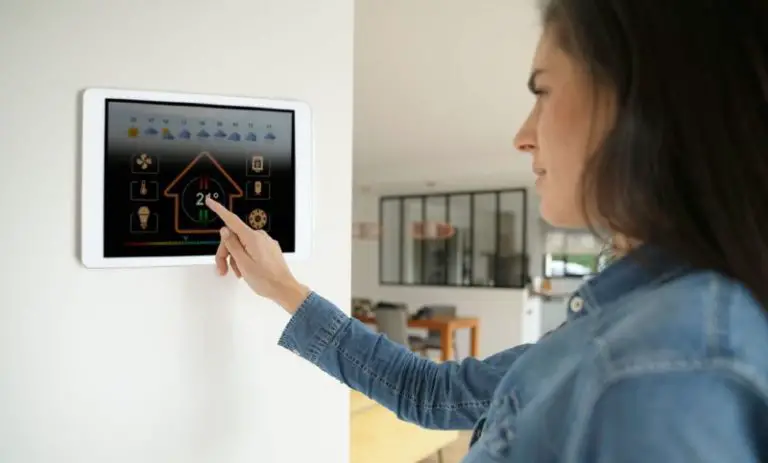When the temperature starts dropping outside, your home’s heat pump works hard to keep you warm. A heat pump uses outside air to maintain heat inside the house. But during below-freezing temperatures, a heat pump is not equipped to provide ample heat for your home.
Both auxiliary heat and emergency heat provide a secondary heat source to either supplement your heat pump (auxiliary heat) or work in the place of your heat pump (emergency heat).
But what is the difference between auxiliary heat and emergency heat? At first glance, they seem very similar, but they serve two distinct roles. Let’s break it down!
Table of Contents
- What is Auxiliary Heat?
- What is Emergency Heat?
- What is the Difference Between Aux Heat and Emergency Heat?
- Final Thoughts
What is Auxiliary Heat?
If you see “auxiliary heat” displayed on your thermostat, it means a backup heat source is currently supplementing your heat pump. This occurs automatically in most heating systems when the outside temperature drops to between 35-40 degrees Fahrenheit.
At these temperatures, your heat pump is no longer self-sufficient to heat your home. Auxiliary heat becomes the necessary supplement. Auxiliary heat typically uses electric-resistance heating to supply the extra heat needed to warm your home.
What is Emergency Heat?
Emergency heat is a backup heat source to take the place of a faulty heat pump. It uses a secondary heating method such as electric, oil, or gas, depending on the type of system.
Is It OK to Run Emergency Heat?
It is ok to run emergency heat during a primary heat pump failure. Simply put, emergency heat is for emergencies.
Let’s say you find yourself with a broken heat pump compressor on a cold winter’s day. This is a perfect situation to activate emergency heat.
The emergency heat setting must be manually switched on your thermostat. You don’t want to turn on emergency heat just because it’s a cold day. That’s not what it’s intended for.
For emergencies like these, we highly recommend you invest in a space heater. You will not regret it.

What is the Difference Between Aux Heat and Emergency Heat?
Both forms of heat use the same heat element and are a secondary source of heat energy for your home. Many homeowners get confused and often use these terms interchangeably, but they are not at all the same.
The differences between the two lie in how they turn on, function, and how long they should run. Here are the main differences:
How They Activate:
- Auxiliary heat is automatically kicked on your thermostat when your system detects the need for it. Similarly, it should automatically turn off when the outside temperate starts to rise.
- Emergency heat is manually turned on by the homeowner when your heat pump breaks down. This will shut off the heat pump entirely and won’t damage your outdoor heat pump system. Emergency heat now becomes the sole heat source for your home and can get expensive quick!
How They Function:
- Aux heat is intended to be a backup heat source that works alongside your heat pump. When it’s turned on, it makes up the rest of the heat your heat pump needs to efficiently warm up your home.
- Emergency heat is intended to be a backup heat source that works instead of your heat pump. It will completely sidestep the heat pump and rely completely on the heat strips.
- Though auxiliary heat and emergency heat often use the same heat source (typically electric heating strips) auxiliary heat is much more efficient because it’s energized by your primary heat pump. On the contrary, emergency heat is used in place of your heat pump and is much less efficient.
How Long They Should Run:
- Aux heat is a temporary aid and should only run when your heat pump requires the boost. Once the temperature outside gets warmer, your aux heat will automatically turn off. If it doesn’t, you should call a professional to get it checked out.
- Emergency heat uses a significant amount of extra energy, hence why it’s called “emergency.” This mode should not be used for a long period, as it can be costly. If your heating system is not working, get a professional to fix it ASAP.
Final Thoughts
There is a common misconception that auxiliary heat and emergency heat are the same. But they have key differences that set them apart.
Suppose you are having trouble with your central heating system. In that case, whether auxiliary heat is staying on in warmer temperatures or you need to turn on emergency heating – we recommend getting your system fixed right away to save you from mounting gas or electric costs.
This article broke down the differences between auxiliary heat and emergency heat. Hopefully, you have come to a better understanding of the purpose of each and can now identify when you need to get a professional’s help!

